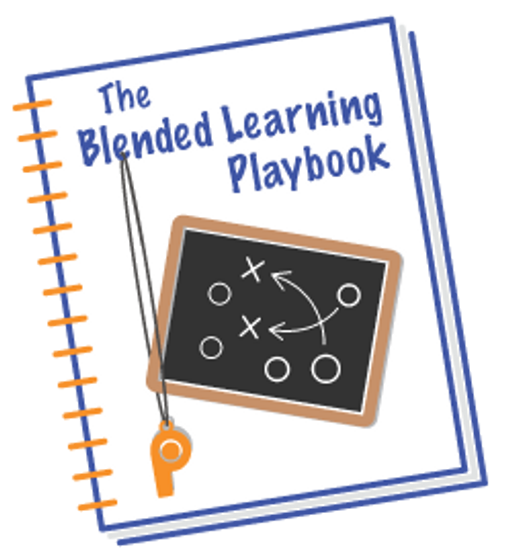
TAKING A DEEPER DIVE
What is Blended Learning?
As technology continues to evolve at an exponential rate, so do we. The way we communicate and consume information is far different today than it was 30 years ago.
To keep up, there's been a necessary shift in the way we teach. A traditional classroom setting is no longer the most effective place for students to learn. With so many new tools available, why not utilize them?
We define Blended Learning as a training model designed to comprehensively integrate multiple delivery modes and learning activities for a given curriculum — generally including a mix of workshops, simulations, and coaching.
To put it even more simply, Blended Learning is a modern way of teaching that's more effective, cost‐efficient, and flexible than a traditional, instructor-led classroom.
High-quality ingredients
To use a cake‐making analogy, the design of an effective Blended Learning model requires more than dumping the ingredients in a mixing bowl.
The sequence and mix of the recipe are critical, along with the quality of the ingredients. Later on we'll dive deeper into how it all comes together, but to start, let's break down those ingredients.
The interactive eLearning curriculum covers the complete body of knowledge and can be accessed at any time. It also allows students to learn at their own pace, giving them the flexibility and freedom to study when and where they want, while still following an overall schedule. Each course includes quizzes, videos, deep dives, and opportunities to practice the skills being taught.
Study Halls are usually scheduled every 1–2 weeks during the eLearning phase, acting as a dedicated block of time to check in with students and make sure everyone is staying on track with the material.
Learning analytics benefit both instructors and students, providing useful data about the course. Instructors can view every student's progress and quiz results, along with the time being spent on each subject. This information can help an instructor determine who might need additional coaching. Meanwhile, students can access their own data, using it to identify subjects that may require more attention.
Simulations & games provide students with fun, interactive opportunities to test their knowledge in an open‐ended environment. Each simulation should mimic a real‐life example, giving students the chance to make important decisions and track results. Students are also able to work in teams and compete against fellow classmates, enhancing the experience.
Watch the presentation from MoreSteam's CEO to understand why training simulations help to create more capable and confident practitioners.
Project work allows students to build on the concepts they've learned and dive deeper into specific aspects of the course.
Finally, one‐on‐one coaching gives students the personal attention they need to move beyond comprehension and develop confidence in the material they're learning.
The supporting pieces
Our Blended Learning courses build on those core ingredients by offering a variety of fun, interactive ways for students to engage with the eLearning material.
Lessons include links to additional content such as tutorials, practice exercises and supporting materials.
Each of these elements provides another layer to the eLearning curriculum, allowing students the opportunity to interact with the course material and enhance their learning experience.
Putting it all together
The end result is a comprehensive curriculum that covers every key topic in detail, providing instructors a foundation they can build on however they see fit.
"I'm a big believer in standard work, but I'm not always the best practitioner of it," says Eric Olsen, a professor at the Orfalea College of Business at Cal Poly in San Luis Obispo, California. "When I get into a certain topic, sometimes I'll cover one aspect of it and sometimes I won't. What I like about MoreSteam is that it provides 80 hours of standardized content, so I get to do the fun stuff in my live sessions."
Olsen builds on our Blended Learning model by offering additional instruction himself, but many companies use our material on its own, without anything else added. Each course is designed to be used either way — however it makes the most sense for you and your students.
Get your Blended Learning Playbook
Want to know more about using a Blended Learning model to successfully implement Lean Six Sigma in your organization?
We've written the playbook on it. Literally.
Our Blended Learning Playbook features case studies, clear definitions, and descriptions of winning strategies and potential pitfalls. Throughout, we chronicle the real‐life activities of Lean Six Sigma deployments of various sizes.
We've designed this Playbook to be useful to all levels of a deployment. Leaders should find the early chapters useful for building the business case for Blended Learning. Instructors (Master Black Belts and Black Belts) can apply the design and best practices chapters towards improvements in their training program. Even Belt students can find handy tips throughout the playbook.
Purchase your copy today through Amazon, or get a preview by downloading the first chapter for free.


